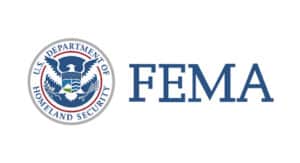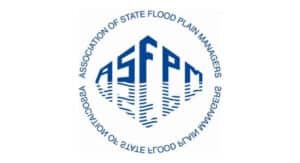The Association of State Floodplain Managers (ASFPM) was founded in 1977. This page serves to preserve and celebrate the legacy of our early years and the people, activities, and accomplishments that made significant, substantial, and enduring contributions to flood risk management and the floodplain management profession as a whole.
Association Milestones

1850-1936 Structural Federal Flood Control
The Swamp Land Act of 1850, enacted by the federal government, was one of the first programs directed at draining federally owned land by states to create productive agricultural lands. If states would drain the wetlands off the coast for Ag use, they were given the land by the federal government, and could in turn deed it to people for farming. This Congressionally authorized act became the basis for the transformation of the nation’s floodplains and wetlands. After the Swamp..Read More
1939-1968 Human Adjustment to Reduce Flooding
Gilbert White authors paper titled “Human Adjustment to Reduce Flooding—1939-1968,” which advocates a new way to think about floodplain management. Rather than build structural barriers to keep water away from people, we should give water the space it needs and keep people out of harm’s way. It was in this paper that White famously opined that “Floods are acts of God, but flood losses are largely acts of man.”
1968 – NFIP Created by U.S. Congress
U.S. Congress creates the National Flood Insurance Program (NFIP) following passage of the National Flood Insurance Act of 1968. View A Chronology of Major Events Affecting the National Flood Insurance Program .
1973 – The Flood Insurance Protection Act
The Flood Insurance Protection Act makes flood insurance mandatory in special flood hazard areas (SFHA).
1976 – Region 5 States Hold First Meeting
The states that make up Region 5 (Illinois, Indiana, Michigan, Minnesota, and Wisconsin) hold their first meeting in Chicago and form what would later become ASFPM.
1979 – Association Extends Reach Nationwide
Floodplain managers from Region 5 states schedule a meeting in St. Paul, MN to discuss NFIP map concerns —15 states from throughout nation show up, giving an indication of the national scope of the issues around floodplain management and that the association needed expand its reach.
1979 – ASFPM Publishes its First Newsletter
ASFPM publishes its first newsletter, which was mailed to all state floodplain managers throughout the nation, and produces “ Strengthening State Floodplain Management Programs,” published by UC-Boulder Natural Hazard Center (NHC).
1979 – Partnership with NHC begins
Partnership between ASFPM and Natural Hazards Center begins when Gilbert White invites Larry Larson to attend a workshop in Boulder, CO and serve on the NHC advisory committee.
1981 – ASFPM Resolutions Address Federal Issues
Board passes resolutions to 1) ask President Reagan to continue EO 11988; 2) urge Water Resources Council to continue federal coordination 3) support of USACE FPMS program 4) support NRCS flood mapping.
1982 – ASFPM Works to Preserve NFIP
ASFPM works to successfully preserve flood risk management funding, including flood maps, despite efforts by the Reagan Administration to cut programs.
1982 – First ASFPM National Floodplain Management Conference
ASFPM holds its first national floodplain management conference in Madison, WI. Professionals from local, state, and federal governments as well as the were among the 175 attendees.
1982-1985 Map Initiatives Project (MIP) Determined Flood Map Format
The first maps produced under the NFIP were community-based and consisted of two similar,but different formats. One, the Flood Insurance Rate Map (FIRM) was produced for use by theinsurance industry for the purpose of determining flood insurance rates. The other, the FloodBoundary and Floodway Map (FBFM) was intended to be used by state and local floodplainadministrators for floodplain management purposes. Both used the same base map as theunderlying layer for landmarks, such as major streets and highways, railways, and rivers,..Read More
1982 – Community Assistance Program (CAP) Replaced SAP
Community Assistance Program (CAP) replaces SAP, allowing states to help local communities meet NFIP compliance requirement and make flood insurance available.
1982 – NFIP Proposes New FPM Regulations
NFIP proposes new floodplain management regulations; and ASFPM weighs in with detailed comments as to the priorities.
1982 – ASFPM Instrumental in Keeping Federal Flood Risk Standards
ASFPM instrumental in convincing a task force on regulatory reform led by Vice President George H.W. Bush to keep EO 11988 to protect federal investments from flooding and the 100-year flood standard, thwarting efforts to weaken them.
1984 – Arizona Becomes First ASFPM Chapter
The Arizona Floodplain Management Association becomes the first ASFPMapproved chapter. Board approves two non-state members as associates to the board for the first time.
1984 – Interagency Task Force on Floodplain Management (ITF-TF)
In a demonstration of the importance of federal partners, Frank Thomas, FEMA; Jerry Peterson, US Army Corps of Engineers; and Jim Wright, Tennessee Valley Authority, were an integral part of what was known as the Interagency Task Force on Floodplain Management (ITF-TF). They wisely invited ASFPM to participate in their meetings to update federal agencies on what states and locals were doing to manage flood risk on the ground.
1985 – ASFPM Recognition for Wetlands
Board officially adds wetlands protection as one of the strategies for reducing flood loss.
1987 – Nollan v. California Coastal Commission, 483 U.S. 825
Nollan v. California Coastal Commission, 483 U.S. 825 (1987) – In California land-use case that went all the way to the Supreme Court, Nollan v. California Coastal Commission, 107 S.Ct. 3141 (l987), the Court held that the California Coastal Council’s conditioning of a building permit for a beach front lot upon granting public access to the beach lacked an “essential nexus” between the regulatory requirement and the regulatory goals and was a taking. This case may be cited in the..Read More
1988 – Stafford Disaster Relief and Emergency Assistance Act
Stafford Disaster Relief and Emergency Assistance Act, an amended version of the Disaster Relief Act of 1974, was designed to provide an orderly and continuing means of assistance from the federal government to state and local governments in carrying out their responsibilities to alleviate the suffering and damage that result from major disasters and emergencies. One of the critical components was change the cost share for hazard mitigation assistance from 50-50 to 75-25, which allowed more communities to participate in the program. It also increased the funding pool to 15% of all disaster costs rather than just certain of the costs.
1988 – ASFPM Membership Expands
ASFPM membership expanded to include professionals in local, state, and federal governments, as well as the private sector and academia.
1990 – ASFPM Board Passes Three Important Resolutions
ASFPM Board passes three important resolutions to improve management of flood risk in the nation: Support for one foot of freeboard to provide better protection against increasing flood levels instead of no freeboard used in NFIP FEMA flood maps should show which properties will be inundated if a dam fails so people are protected FEMA flood maps should use GIS to more accurately show properties and flood areas
1990 – The Community Rating System (CRS) Begins
The Community Rating System (CRS) begins. Under CRS, discounts on flood insurance premiums are available in communities that voluntarily initiate activities that reduce flood losses or that increase the number of flood insurance policies. CRS is the product of three years of development by the Community Rating Task Force, which had representatives from FIA, the insurance industry, and state and local floodplain managers. Extensive field testing, critiques, and reviews with communities, public interest organizations, and the ASFPM’s technical advisors were..Read More
1992 – Increase in State Activities and State Participants
A survey of state NFIP coordinators by ASFPM identifies an increase in state activities and state participants. The survey notes that many states participate in activities to restore and preserve the natural and cultural resources of floodplains and that many identify the environmental benefits of floodplain management as the key to obtaining wide public support. The survey reports that 39 states have more than 175 full-time equivalent personnel.
1994 – ASFPM Produces “National Flood Programs in Review, 1994”
ASFPM produces “National Flood Programs in Review, 1994,” the association’s first comprehensive effort to assess national programs and policies related to floodplain management.
1995 – State Programs Face Challenges
A survey of states by the ASFPM describes trends since 1992 that have reversed some of the continuous advances made since the late 1960s. According to the survey, state programs face challenges in budget, organization, and authority that threaten their ability to be full, active partners with the federal government and local communities in reducing flood losses. The report concludes that states’ capabilities have eroded because of legislative dilution, budgetary restrictions, and organizational dissection.
1996 – ASFPM Establishes Its Executive Office In Madison, Wisconsin
ASFPM establishes its executive office in Madison, Wisconsin. The building includes a library which has catalogued more than 700 publications, originally housed at the National Floodplain Management Resource Center at the University of Colorado.
1997 – Federal Interagency Task Force Convenes
To consider and implement the recommendations in the 1994 report, A Unified National Program for Floodplain Management, FEMA convenes a group of about 40 experts at the annual conference of the Association of State Floodplain Managers in Little Rock, Arkansas and prepares a report on the forum.
1997 – The ASFPM Foundation is Established
The ASFPM Foundation is established. The foundation serves as the catalyst for ASFPM, its chapters and members to advance projects, education and policy initiatives that promote reduced flood risk and resilient communities.
1999 – ASFPM Creates the Certified Floodplain Manager (CFM) Program
ASFPM creates the Certified Floodplain Manager (CFM) Program. The program is intended to advance the knowledge of floodplain managers, enhance the profession of floodplain management, and provide a common basis for understanding floods and flood losses.
2000 – ASFPM Publishes “ The Nation’s Responses to Flood Disasters: A Historical Account”
ASFPM publishes “The Nation’s Responses to Flood Disasters: A Historical Account,” which summarizes the forces and events that have affected floodplain management in the United States since the 1850s.








